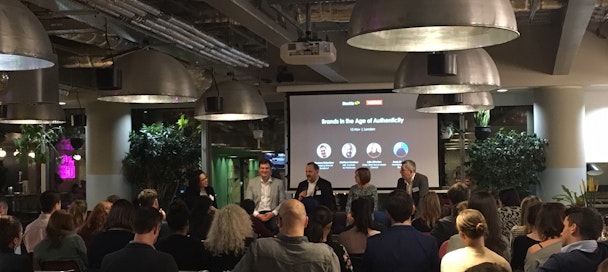What brand authenticity means in an age of user-generated content: 5 key takeaways
After Pepsi and Dove were forced to pull their ads this year, receiving strong condemnation by the public - the notion of brand authenticity and why brands are failing to connect with consumers has been called into question.

Event: Brands in the Age of Authenticity
A study by user-generated content (UGC) marketing platform, Stackla recently revealed that 60% of consumers view UGC as the most authentic form of content. With users posting around 2.5 billion pieces of content every day, the rise of UGC has emerged as a form of authentic brand storytelling in its own right.
At a panel event hosted by The Drum, in association with Stackla last week, panelists discussed what authenticity means in an age of UGC and why the right form of risk-taking can ultimately payoff for marketers.
Here are the five main takeaways.
Being authentic means taking risks
Tour operator Busabout’s entire business model is based on images generated by customers that have taken its tours. Duncan Robertson, managing director at Busabout, talked about his lightbulb moment when he decided he did not want professional photographers to capture the content anymore; instead he wanted to let the content come straight from the customers themselves.
“It was one of the hardest things our business has ever gone through,” admitted Robertson. “We had to literally change the way we market our business by asking our customers ‘Can we use your image?’ and then waiting for the content to come to us. It was a huge risk for us because it meant that we were no longer in control.”
Adding to his point, Matthew Kershaw, managing director of content at Iris Worldwide, said giving up control is no easy feat. “You have to really believe in your product. You lose some of the aesthetic, but you gain so much more. That's what authenticity is – it does not have to be pristine.”
But with 85% of consumers, and 97% of millennials, saying they would share a positive travel experience on social media, there’s a goldmine of authentic content available for the picking by brands.
Be believable in your space – or risk being found out
In a rush to sound authoritative, brands tend to get behind a cause they know nothing about. But consumers are not easily fooled, warned Julie Atherton, chair of DMA Social Media Council. She said the most important aspect of authenticity is having the right to speak about the subject matter.
“If you start talking about things that are not relevant to you, nobody will trust you and then you won't be able to connect with that audience,” she said.
Atherton lauded cosmetics brand Lush for being a great example of a company that knows what it stands for and creating products that deliver on its core values. “Even when you go to their website, the first thing you see is the cause that they are promoting, not what products they want you to buy. Because they have a right to talk about it and they live that through everything they do, it feels authentic.” she added.
User-generated content can be more powerful than influencers
While most brands have been eager to take on influencers in the hopes to rejuvenate their brand image, this is not always the best move, the panelists agreed. As Robertson pointed out, “I just don't think that's the next stage in marketing. They are not embracing the real authentic story about their brand and how it exists in a consumer's life.”
Atherton agreed, and added that a common misconception about UGC is that it’s only about images but it encompasses a range of things, like product reviews. “It's easy to forget that people's experiences that come out in their own words can be incredibly powerful and convincing,” she said.
Facebook is just as lost about GDPR
According to the DMA, nearly half of companies will not be ready in time for GDPR, to be enforced next year. Andy Mallinson, managing director at Stackla, is seeing brands slowly getting ready for it. “As a software company who deals with a lot of personal data, we need to be ready, and we are.”
Atherton referred to her conversation with a financial services client who uses Facebook to serve ads to customers in a timely and personalised manner. “They asked Facebook if they will be able to continue after GDPR and Facebook could not give an answer. Some things which are acceptable now may not be possible after GDPR. You need to be on the ball.”
Machine learning will help with content volume
It can be hard to predict where brands will find themselves in the next five years, but it’s likely they will still be grappling with the personalisation challenge. For Kershaw, marketers will expect to get things done faster, cheaper and with better quality. “They will be able to produce large volumes of content quickly and make it user-centric by seeing what people are responding to,” he said.
“Posting on social media is not going to go away anytime soon either,” added Mallinson. He said the type of content users create might change but the “habit and culture” is here to stay. “We are going to see more and more content and will need new ways, whether through AI or machine learning, to sift through it all and deliver personalised content experiences,” he concluded.


